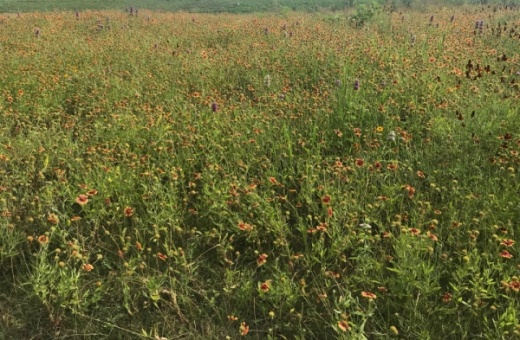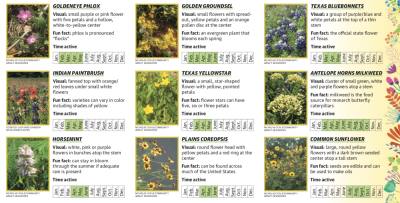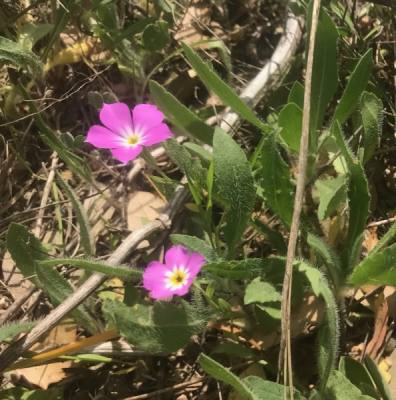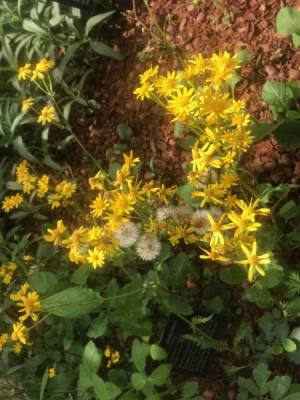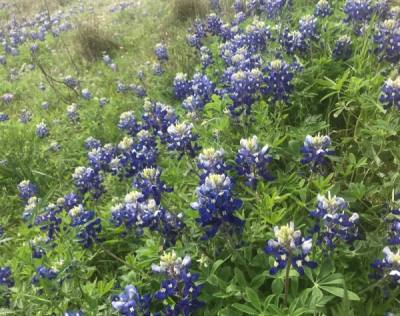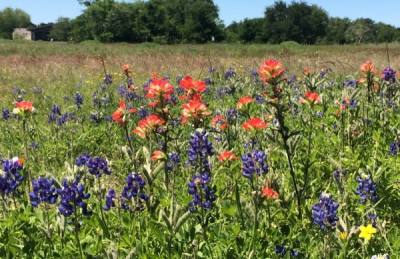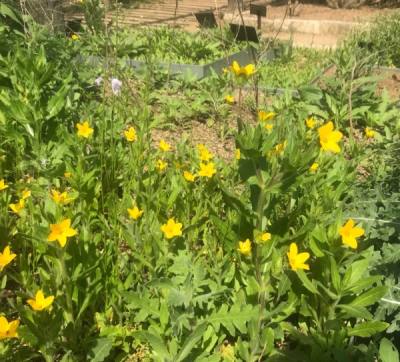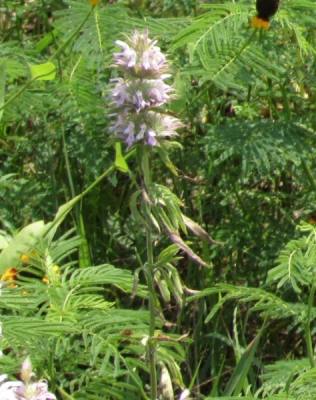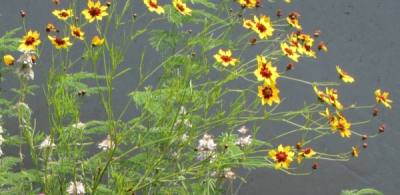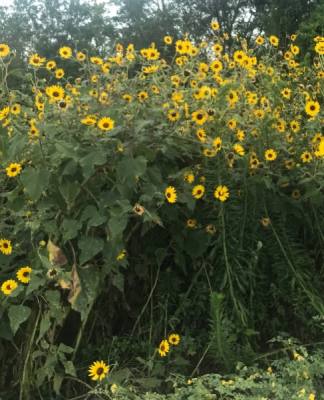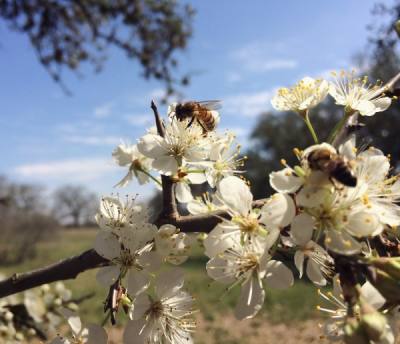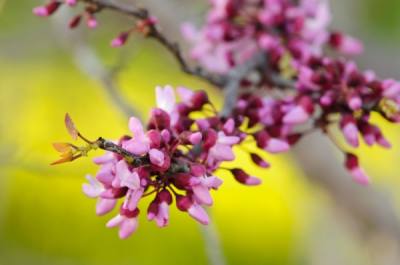While wildflowers are present every spring, the amount of blooms and length that they stay vibrant can vary each year depending on weather. According to Andrea DeLong-Amaya, the director of horticulture at South Austin’s Lady Bird Johnson Wildflower Center, spring flower blooms typically last into May but can sustain through June. A colder winter can push back blooming, while spring rain can help extend the season into the summer.
DeLong-Amaya said that most wildflowers that pop up in the spring begin to grow in the fall. Some fall and winter rain, combined with days of good sunshine, can lead to a full spring display of flowers. Those interested in spreading wildflower seeds on their properties should seed in the early fall for a spring bloom, she said. Other varieties also bloom in late summer and the fall, which could be seeded in the spring.
“It’s always nice to promote native flowers, because it helps promote habitat and food for native species, and they are still beautiful to look at,” DeLong-Amaya said.
Wildflowers benefit native pollinators, such as bees, butterflies, birds and beetles. They can also provide shelter for animals and insects and are a source of food for some native animals, she said.
Wildflowers can also grow in areas that have been disturbed—impacted by wildfire or prescribed burns, drought, over-grazing or excavation.
“Wildflowers will take advantage of disturbed sites,” DeLong-Amaya said. “If there is soil exposed, fast-growing plants like weeds and wildflowers will come in.”
Native flowering trees, such as redbuds, Mexican plums and laurels, also show spring colors in Central Texas, she said.
CENTRAL TEXAS WILDFLOWERS
The following wildflowers can be found across Central Texas each spring and into the summer. This list is not comprehensive.
GOLDENEYE PHLOX
Visual: small purple or pink flower with five petals and a hollow, white-to-yellow center
Fun fact: phlox is pronounced “flocks”
Time active: Feb.-May
GOLDEN GROUNDSEL
Visual: small flowers with spread- out, yellow petals and an orange pollen disc at the center
Fun fact: an evergreen plant that blooms each spring
Time active: Feb.-June
PINK EVENING PRIMROSE
Visual: a light pink or white flower with a yellow center and four distinct petals
Time active: February-June
Fun fact: evening primroses typically open flowers in the evenings
TEXAS BLUEBONNETS
Visual: a group of purple/blue and white petals at the top of a thin stem
Fun fact: the official state flower of Texas
Time active: March-May
INDIAN PAINTBRUSH
Visual: fanned top with orange/ red leaves under small white flowers
Fun fact: varieties can vary in color including shades of yellow
Time active: March-May
TEXAS YELLOWSTAR
Visual: a small, star-shaped flower with yellow, pointed petals
Fun fact: flower stars can have five, six or three petals
Time active: March-May
ANTELOPE HORNS MILKWEED
Visual: cluster of small green, white and purple flowers atop a stem
Fun fact: Milkweed is the food source for Monarch butterfly caterpillars
Time active: March-Oct.
HORSEMINT
Visual: white, pink or purple flowers in bunches atop the stem
Fun fact: can stay in bloom through the summer if adequate rain is present
Time active: April-June
PLAINS COREOPSIS
Visual: round flower head with yellow petals and a red ring at the center
Fun fact: can be found across much of the United States
Time active: April-June
FIREWHEEL
Visual: round flower with yellow-tipped red petals
Fun fact: also known as Indian Blankets
Time active: April-June
COMMON SUNFLOWERS
Visual: large, round yellow flowers with a dark brown seeded center atop a tall stem
Fun fact: seeds are edible and can be used to make oils
Time active: July-October
FLOWERING TREES
A number of native trees, including the Mexican plum and Texas redbud, bloom during the spring in Central Texas. Trees that go bare in the fall and winter produce flowers in early spring, which are replaced by leaves later in the season. Flowers can attract pollinators, while nectar and fruits produced can be a food source for native animals.
MEXICAN PLUM
Visual: a tree with clusters of white flowers and oval-shaped leaves
Fun fact: produces dark-purple fruit that ripen in the summer
Time active: Feb.-April
TEXAS REDBUD
Visual: a 15- to 20-foot-tall tree with small pink flowers
Fun fact: rounder, more glossy leaves than other redbud species
Time active: March-May




